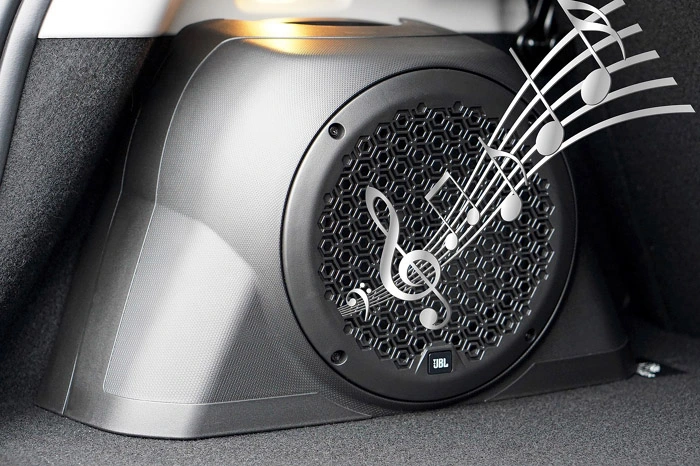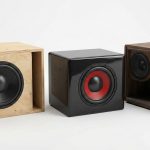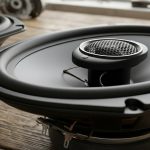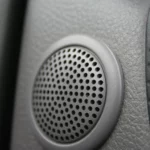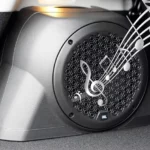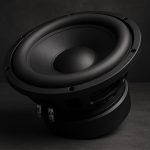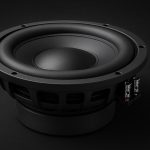After extensive research, it has been found that the number of speakers in a vehicle can range from as few as two to as many as a dozen, depending on the make and model as well as the stereo system. While most cars come with at least four speakers, higher-end models often come with additional speakers placed in the dashboard, rear deck, or front seat headrests to enhance sound quality.
Ignite your curiosity and explore the world of automotive audio! Learn more about how many speakers are in your car and elevate your driving experience to new heights.
Importance of Speaker Quantity
The speaker quantity in a car is important because it affects the sound quality and performance of your vehicle’s audio system. The more speakers you have, the more sound coverage and clarity you can achieve. However, having more speakers does not necessarily mean having better sound. You also need to consider the car speaker size, type, quality, power, placement, and tuning. Many speakers can also cause problems such as interference, distortion, or imbalance. Therefore, you need to find the optimal speaker quantity for your car that suits your needs and preferences.
Common Car Stereo Terms and Specifications
If you’re an audiophile, you understand the importance of right speaker specs. But for those who are just starting to dive into the world of audio, the spec sheet can be overwhelming. Here are some common audio terms you should know to better understand what you need in a speaker:
- Frequency Response: This measures how well a speaker handles different frequencies. The range is shown as a graph with Hertz (Hz) on the X-axis and amplitude (dB SPL) on the Y-axis. The peaks and valleys show where the speaker over- or under-plays specific frequencies relative to how they’re intended.
- Impedance: This is how much electrical energy a speaker needs and helps determine how much power to supply. It’s usually rated in Ohms, with lower impedance drawing more power from an amplifier.
- Power Handling: This is the theoretical limit of the amount of power a speaker can handle in terms of electrical wattage. A large speaker could handle 1000W or a small speaker could handle under 1W.
- Sensitivity: Sensitivity in car sound system is a measure of how much sound a speaker produces from the power applied to it. It is usually expressed in decibels (dB). In other words, this is the relationship between the wattage going into a speaker and the volume coming out of it measured at a specific distance away. It’s closely related to power handling and impedance and can tell you how loud a speaker will get with a given wattage.
- Resonant Frequency: This is the lowest frequency a speaker will function well at and is determined by the materials and design of the cone and driver. It plays a role in preventing distortion and determining the best enclosure for a speaker.
How Many Speakers Are In My Car
When cruising down the road, music can make a drive much more enjoyable. But have you ever wondered how many speakers are in your car? The answer depends on the make and model of your vehicle as well as the sound setup. Most car speakers come in pairs. The quantity of speakers in a vehicle can range from two to a dozen, and placement can include front and rear doors, dashboards, rear decks, and even headrests. However, most vehicles come equipped with at least four speakers to provide better audio experience for drivers and passengers.
For those who want the best sound quality speakers, carmakers may offer higher-end vehicles or audio packages with additional tweeters to enhance clarity and overall listening experience. Installing aftermarket speakers can also improve sound quality, but it is crucial to match the power output of the car stereo to the power handling capacity of the speakers. The car’s electrical system may also need modifications to power new speakers or an aftermarket Amp.
Upgrading car speakers without Amp can be a low-cost way to improve audio excellence, but it is essential to consider speaker sensitivity and power handling in relation to the car’s stock audio output. While upgrading speakers can be a relatively simple process, installing them incorrectly can damage the vehicle’s sound system and electrical components, leading to costly repairs.
Factors Affecting the Number and Placement of Speakers
Make And Model Of The Car
Different car manufacturers and models may have different speaker systems and configurations. Most cars come with at least four speakers as standard. Higher-end models often have additional speakers in the car dashboard, front seat headrests, or rear deck.
For example, some luxury cars may have more speakers than economy cars, or some sports cars may have speakers in the headrests or rear deck. You need to check the specifications of your car to find out the number of speakers it has and where they are located.
Stereo system
The quantity and location of speakers in your car can also be influenced by the sound system. The stereo system is what distributes audio impulses to the speakers. It can have various power outputs, features, and functionalities that affect the sound clarity and quantity of speakers. Some audio systems, for example, may include built-in amplifiers, equalizers, or crossovers that can enhance or modify sound signals. To ensure best performance and compatibility, match your sound system to your speakers.
Trim Level
Another aspect that might influence the number and placement of speakers in your vehicle is the trim level. A trim level is a version or option of an automobile model with various features and specs. Some vehicles, for example, may have a base trim level with 4 speakers and a premium trim level with six or eight speakers. Check your car’s trim level to see what kind of sound system it has and if you can enhance it.
To find out the number of speakers your car has, you can check the owner’s manual, look at the speaker grilles on the doors or dashboard, or use an online tool that can tell you based on your vehicle identification number (VIN).
What Is the Difference Between the Front and Rear Speakers
Front speakers are the ones that are located on the dashboard or the doors of your car. They are responsible for delivering the main sound of your audio system, especially the dialogue and the high and mid-range frequencies. They help you hear the character lines in the media you are streaming clearly and crisply.
Rear speakers are those found in the back seat or trunk of your vehicle. They are in charge of filling in the gaps and producing a more robust sound, particularly in the mid-range and low frequencies. They give your audio system depth and dimension, letting you feel engaged in the sound.
So, front and surround speakers are not exactly the same. They have different roles and functions in your audio system. However, they are not completely different either. They are both part of a bass-reflex system that allows air to escape from the speaker cabinet, resulting in a deeper low-end frequency response. They also both need to be properly placed and tuned to achieve the excellent sound quality possible.
The main difference between them is where you set them in the room. Front speakers should be as close to your ears as possible, preferably at or slightly above ear level. Surround speakers should be situated behind you, preferably at or slightly below ear level. You may construct a balanced and realistic soundscape that surrounds you with sound this way.
Types of Car Speakers
Full-Range Speakers:
- Full-range speakers (coaxial speakers) have one or more drivers on a single frame
- Drivers include woofer, tweeter, midrange, and super tweeter
- Easy to install and replace, these speakers fit in your car in most factory locations, are affordable and available
- May not reproduce full sound spectrum, may have interference and distortion
- Suitable for casual listeners who want a simple and convenient upgrade
Component Speakers
- Component speakers (separate or custom speakers) have separate drivers in different locations
- Drivers include woofer, tweeter, midrange, and crossover
- More complex and expensive than wide-range speakers, require more installation time and skill, additional wiring and mounting hardware, and amplification
- Can deliver more accurate and realistic sound with higher clarity and detail, better soundstage and imaging
- Suitable for audiophiles who want a high-end and customized speaker upgrade
Subwoofers
- Subwoofers are special type car speakers that produce very low frequencies or bass
- Subwoofers come in different sizes and configurations that affect their power handling, frequency response, and impedance
- Woofers require more installation space and equipment than other speakers, need a dedicated enclosure and a separate amplifier
- Woofers can enhance the overall sound reproduction and performance of the vehicle audio equipment by filling in the low-end frequencies, create a more exciting and enjoyable listening experience by adding punch and rumble
- Subwoofers in the car are suitable for bass lovers who want a powerful and thrilling upgrade
Upgrading Car Speakers Without Amplifier
- If you want to improve the sound clarity and performance of your vehicle audio equipment, but you don’t want to spend money and time on installing an amplifier, you can still upgrade your car speakers without one. Here are some tips on how to do it.
- Choose speakers that have high sensitivity and low impedance ratings. These high-end speakers can produce more sound with less power from your factory head unit or receiver. They also have less resistance to the electrical current, which means more power can reach the speakers.
- Choose speakers that match the size and shape of your factory speaker locations. This will make the installation easier and avoid any modifications or cutting. You can use a speaker adapter or bracket if the new speakers are typically different from the original ones.
- Choose speakers that have a good frequency response range. This will ensure that the speakers can reproduce the full spectrum of sound with clarity and detail. You can also add a subwoofer or a tweeter if you want to enhance the bass or treble of your car’s sound system.
- Choose speakers that have a good build quality and durability. This will ensure that the speakers can withstand the harsh conditions and vibrations in your car. You can also look for speakers that have weather-resistant or water-resistant materials if you want to protect them from moisture or dust.
Related Post: 13 Expert Tips To Make Car Speakers Louder Without Amp
Enhancing Your Car Audio System: Tips and Tricks
If you’re looking to improve the sound precision in your car, there are several no-brainer upgrades and tricks that can make a huge difference. Here are some tips to get started:
Upgrade Your Speakers: The factory car speakers in your car may not deliver the high-quality sound you desire. Replacing your speakers with aftermarket speakers will give you better clarity and tighter bass.
Don’t Max Out Your Tone Controls: Boosting your car’s tone controls all the way up can create distortion and strain on your speakers. Instead, try using smaller boosts in the bass and lower the highs and mids for a better overall sound.
Use A Better Digital-To-Analog Converter: A quality DAC in your aftermarket stereo can make a big difference in audio quality. It can decode your music with maximum detail and sound.
Use Higher Quality Music Files: Avoid compressing your music files too much, as it can lead to losing high and low-frequency information and details. Using better quality source material can greatly enhance your listening experience.
Use The Best Connection: The way you connect your phone to your car receiver can affect music quality. For example, Bluetooth connections can limit your music quality, and plugging into your headphone jack can also lead to compression issues. Instead, consider using a USB cable to connect your phone to your receiver.
Add An Amplifier: Adding an external amplifier can give your speakers more power and produce more depth, clarity, and volume. A two-channel amplifier is even better as it allows you to power your standard speakers while leaving a dedicated channel for a subwoofer.
Reduce Road Noise: Road noise can be a major distraction when listening to music in your car. By installing sound-dampening materials, you can significantly reduce road noise and enhance your overall listening experience.
By following these tips and making a few upgrades, you can turn your car into a traveling listening room and enjoy high-quality audio on the go!
Related Post: How To Fix Car Speaker Not Working On One Side, Reasons, Symptoms
Conclusion
As a car audio specialist technician, it’s important to understand the number of speakers in a vehicle and their placement to provide the best listening experience. While the quantity of speakers can vary from two to a dozen, it’s not just about quantity but also the quality of speakers that enhances the sound. Upgrading car without speakers amplifiers can also be a cost-effective solution to improving music quality. Remember to match the speakers with the car stereo’s power output and consider speaker sensitivity and placement for optimal sound.
FAQs
The quantity of speakers in a vehicle can vary depending on the make, model, and trim level of the car, but most cars have at least 4 speakers in the front and rear doors speakers.
The quantity of speakers you need for your car depends on your personal preferences, budget, and listening habits, but a good rule of thumb is to match the power of your car stereo to the power handling capacity of your speakers.
The speakers in a vehicle are usually located in standard places such as the doors, the dash, or the rear deck, but some cars may have extra speakers in the dashboard, rear deck, or front seat headrests.
To run 6 speakers in a vehicle, you need a 6-channel amplifier that can power each speaker separately or a 4-channel amplifier that can power two pairs of speakers and a subwoofer. You also need the speaker cables and connectors to connect the speakers to the amplifier.
To wire 6 speakers in car, you need to connect each speaker to its corresponding channel on the amplifier using speaker cables and connectors. You also need to connect the Amp to the head unit using RCA cables and to the battery using a power cable and fuses.
The kind of amp you need to run 6 speakers depends on the power rating and speaker impedance of your speakers, but a general recommendation is to use a 6-channel Amp that can deliver at least 50 watts RMS per channel at 4 ohms.
The speakers are usually located in different places depending on your car model and trim level, but you can usually find them by looking for speaker grilles (the covers that protect the speakers) in your car’s interior or by removing the speaker grilles or door panels and looking at the actual speakers.
